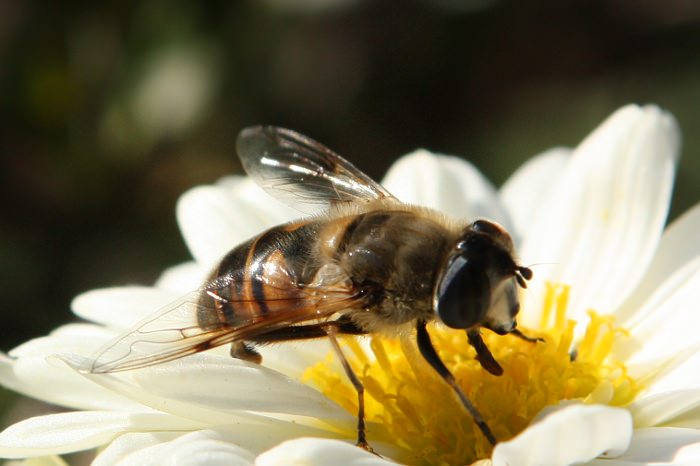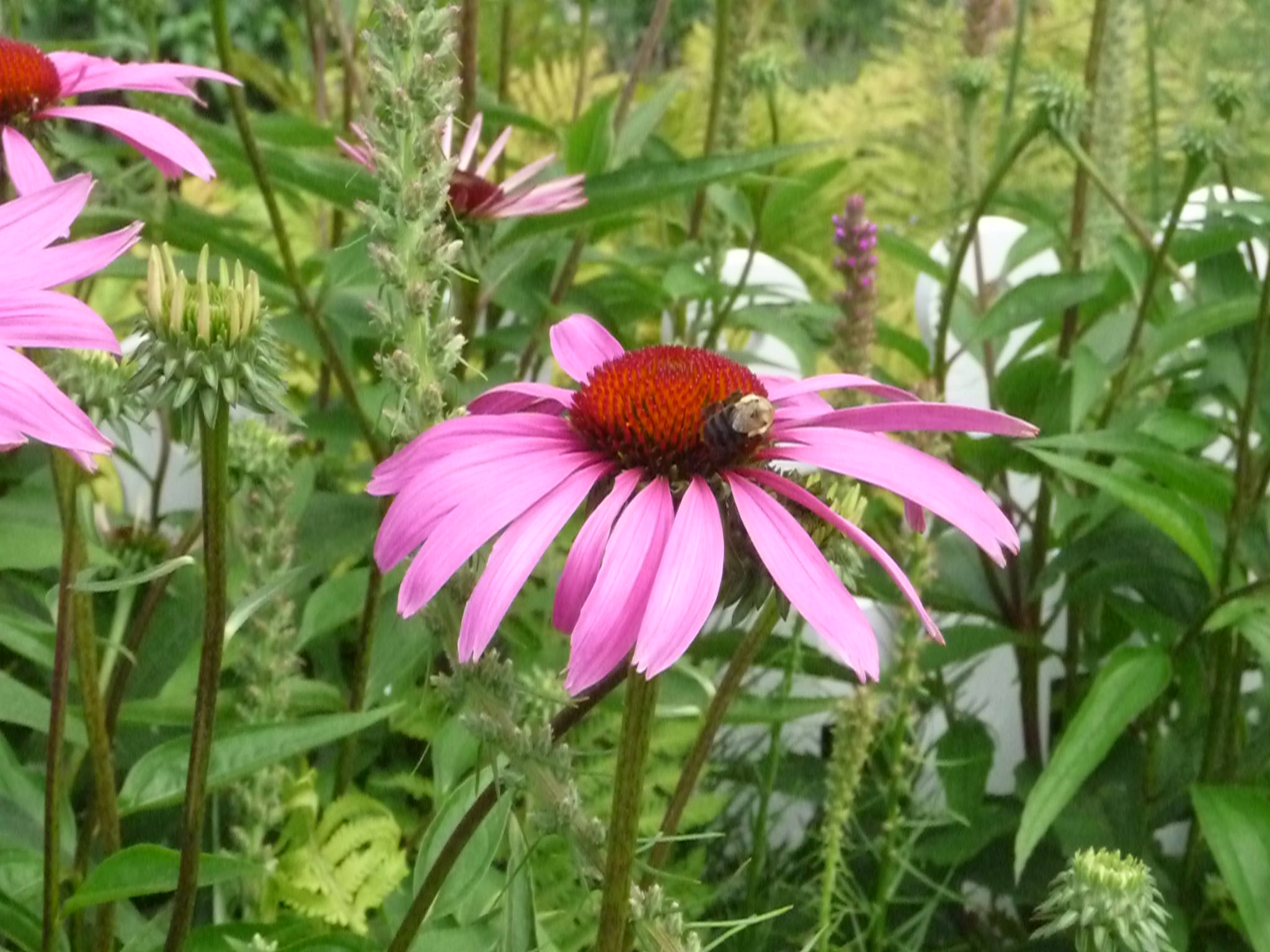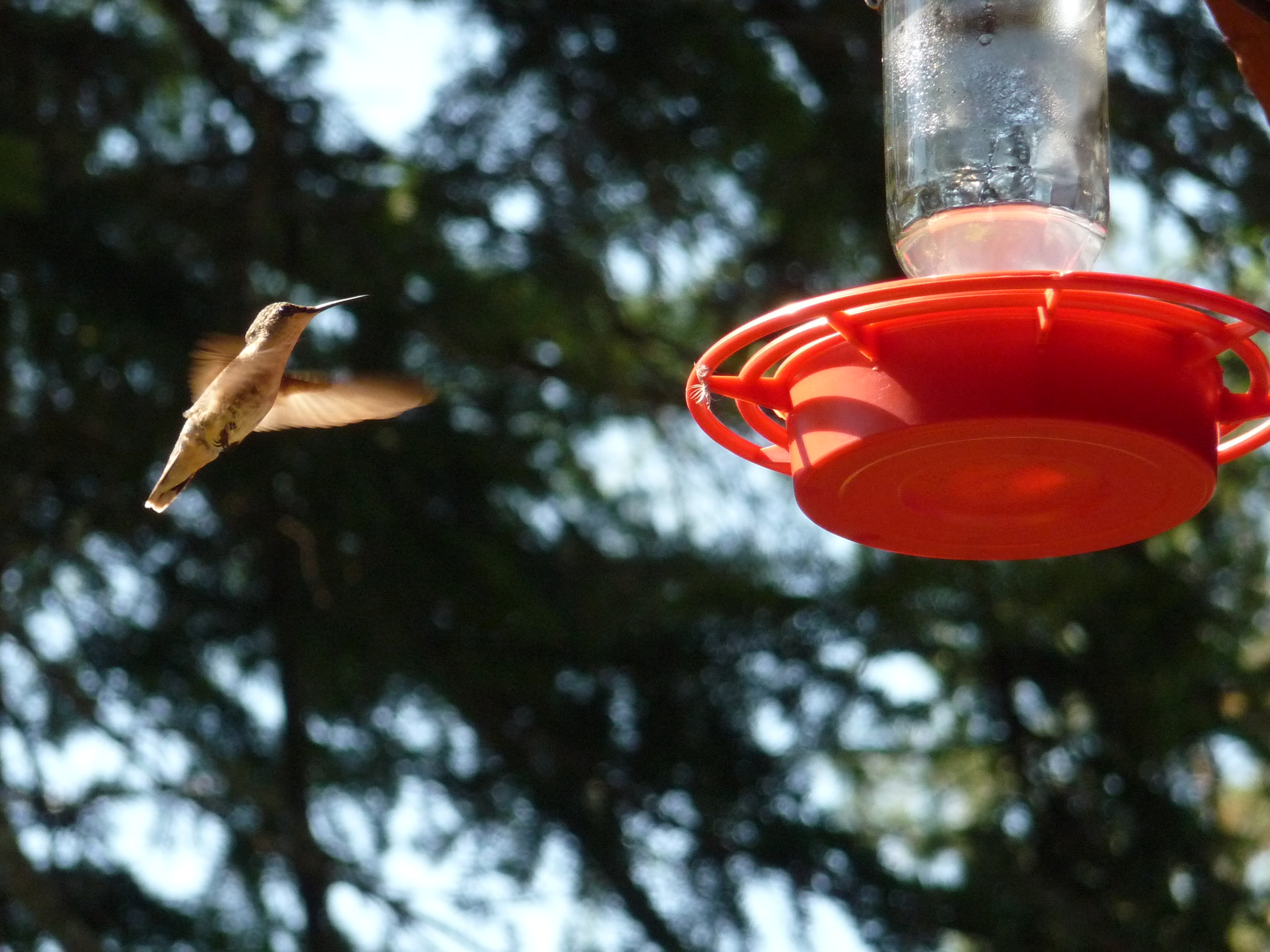When most people think of pollinators, they think of stinging insects – which aren’t always welcomed guests to every backyard. But not every pollinator is a stinging insect, and there are some very good reasons you may want to put out the red carpet for these little fellas. According to the US Fish and Wildlife Service, pollinators are nearly as important as sunlight, soil and water to the reproductive success of over 75% of the worlds flowering plants. They are crucial to the production of most fruits, nuts and berries which people and wildlife depend. Over 150 food crops in the United States depend on pollinators including blueberries, apples, squash, and tomatoes. Bees, butterflies, bats, hummingbirds, hummingbird moths, and hoverflies are some of the pollinators you may see right in your own backyard garden. They are not only beneficial, but are interesting to watch and enjoy. Due to misuse of pesticides, disease, and habitat loss, pollinators populations are declining at an alarming rate. Here’s what you can do to attract pollinators and help them thrive:
Choose Nectar and Pollen Rich Flowers:
When choosing flowers and plants, native species are the best for supporting a healthy and strong pollinator community. Species like butterflies travel for hundreds of miles to come back to the same habitat over and over, and they become accustomed to the local flora. Consult with your local nursery on which native plants are best for the butterflies that migrate, as well as other pollinators that will visit. Also, include plants like dill, fennel, and milkweed that butterfly larvae feed on.
Grow Successive Blooms:
Just as you like to eat more than once a year, pollinators need to feed all season long. To attract them throughout the season, plant flowers, trees and shrubs with overlapping bloom times. Use feeders for hummingbirds.
Eliminate / Limit Pesticide Usage:
Many pesticides are toxic to bees and other beneficial organisms. When managing pests and disease, it’s better to take a conservative approach. When at all possible, chose organic methods to manage pests. If you do have to apply pesticides, apply them carefully and selectively. To protect pollinators, do not use pesticides on open blossoms or when bees are active and present. Read labels carefully. You may want to consider hiring a licensed professional.
Offer Shelter:
Butterfly boxes and bat houses are great ways to provide a safe place for pollinators to have and protect their young. Should you find a swarm of bees, call an apiary so they can help you provide nesting boxes or hives, or rehome them without harm.




Recent Comments